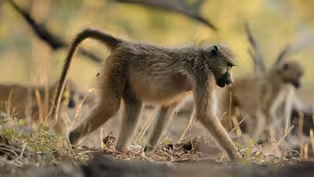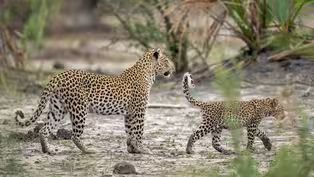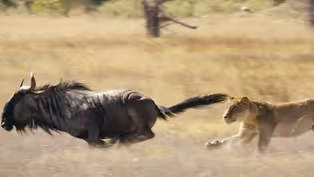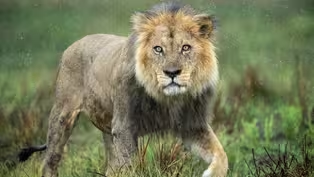
Filming Africa's Three Big Cats
Clip: Season 43 Episode 7 | 7m 30sVideo has Closed Captions
Filmmakers discuss their experiences living on location with Africa's three big cat families.
Filmmakers of "Big Cats, Small World" share their remarkable experiences living alongside Africa's three big cat families. Writer and Director Robyn Keene-Young delves into the differences in the developmental journeys of each species’ cubs, while Producer and Director of Photography Adrian Bailey reveals the unique challenges of capturing these big cats on film.
Problems playing video? | Closed Captioning Feedback
Problems playing video? | Closed Captioning Feedback
Major support for NATURE is provided by The Arnhold Family in memory of Henry and Clarisse Arnhold, Sue and Edgar Wachenheim III, The Fairweather Foundation, Charles Rosenblum, Kathy Chiao and...

Filming Africa's Three Big Cats
Clip: Season 43 Episode 7 | 7m 30sVideo has Closed Captions
Filmmakers of "Big Cats, Small World" share their remarkable experiences living alongside Africa's three big cat families. Writer and Director Robyn Keene-Young delves into the differences in the developmental journeys of each species’ cubs, while Producer and Director of Photography Adrian Bailey reveals the unique challenges of capturing these big cats on film.
Problems playing video? | Closed Captioning Feedback
How to Watch Nature
Nature is available to stream on pbs.org and the free PBS App, available on iPhone, Apple TV, Android TV, Android smartphones, Amazon Fire TV, Amazon Fire Tablet, Roku, Samsung Smart TV, and Vizio.
Buy Now
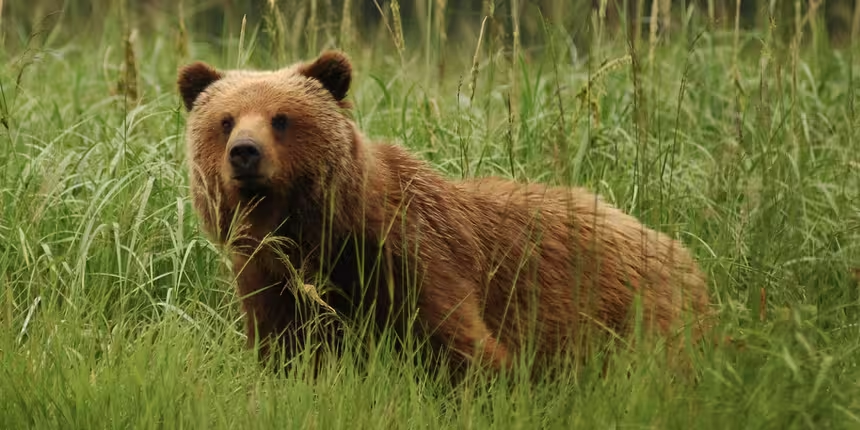
Explore More Ways to Watch
Bring the beauty and wonders of wildlife and natural history into your home with classic NATURE episodes.Providing Support for PBS.org
Learn Moreabout PBS online sponsorship- My name is Robyn Keene-Young.
I'm the writer and director on "Big Cats, Small World."
So our partner said to us, how about a show with all three big cats in one episode?
And we found a beautiful spot on the shores of the Gomoti River in Botswana.
It turned out that this small area was perfect for all of these cats.
It met every one of their needs in some other way.
It was just, it was paradise.
It was a beautiful place to spend nearly 18 months in the company of these cats.
Shortly after we arrived there, the three cats that we found in that area started having families.
So we came across a cheetah mother who had five cubs already, and then about a month after we'd been there, our lion pride started giving birth to all these gorgeous little cubs.
And then the leopard mother gave us two leopard cubs to follow.
So the story then started telling itself, and it started evolving into a story about big cats raising their families, sharing this landscape and seeing how, how they go about it and how they actually managed to coexist.
We would often have the cats come through camp, particularly the lions.
When the cubs were really small, they would come into our camp and they had this thing about the solar panels, and they would grab the cables that connected the solar panels, or they'd grab the little stick that held the panels up and they'd make off with it to then, you know, you can't really run after a lion cub and get your stick back.
- I think the biggest challenge was just the sheer time that it, that it takes for, for these animals to progress through their lives.
You know, it quickly became evident that that was gonna be what we needed to do.
To tell the story was to show each of these families raising their offspring, and that would reveal the different ways that they go about it and the different paces that each of the species and each of the families grew.
- Leopard cubs are probably the most precocious, and at five months old, they were already jumping on things.
And then the cheetah cubs were, you know, they're growing up on high speed from the minute they're born, just about the mothers trying to get them ready for a life on their own.
And then the lion cubs were, they didn't really go anywhere.
Their, their milestones are so much slower because particularly the female lions, they stay in the pride for the rest of their life.
So they're nurtured by all these mothers and aunts, and they can take their time.
And actually getting advanced or learning to hunt.
Cats are a challenge.
I think at the start of the show, we said, okay, this is the last big cat show we make, because it's just, it's too hard.
But you get your rhythm, you get into it.
You, you, you come to accept that it's gonna be long hours of doing nothing.
But when they do something, the rewards are so extraordinary.
And they're wild animals.
They're unpredictable, and it's important to remember that they're not there for us.
They're not actors.
They're marking territories.
They're trying to stay alive, they're trying to hunt, and we are just happen upon them at that moment in their life.
- What happens when you have these long times in the field is you get to know individual characters.
She was an amazing mother, or a mother cheated.
To have five or six cubs is not extraordinary.
But for a mother cheetah to raise five cubs to, to independence is not only to get them to independence, but also to have instilled in them a sense of their world and a sense of how the world operates.
And although they were quite nervous for those first few weeks by themselves, they eventually came through and we hoped they're out there somewhere.
- So when we first arrived, one of the first characters we came across was this sort of aging male lion.
He was kind of stiff and lame and didn't really look particularly enthusiastic about life whenever we, we saw him, and it became clear over the months that he owned this territory that we'd been working in, and he was controlling it all on his own, which is very unusual because male lion typically form coalitions, and that's usually 2, 2, 3, even five adult males will hold a territory.
But this guy was doing it all on his own.
We liked him because he was the underdog.
He, he was surrounded by coalitions of males that were trying to get into his territory, and he was not in his prime.
He was very much coming to the, the end of his life.
We suspected that this would be his last batch of cubs that he would father, he was smart and he did what he had to, to look after this large family that he suddenly had.
I hope the audience takes home the fact that cats have a, it's a three dimensional life.
There's a side to them that we don't always see, and that isn't always featured.
And it's, it's quite extraordinary what they do to actually raise cubs in the environment that they do, that they actually get it right.
There's so much against them and they just take it in their stride.
- It's a little glimpse in into the world of, of these big cats in a perfect environment and through the vast majority of their range, it's not a perfect environment on the edges of all these beautiful, protected areas.
There's a lot of conflict and it's increasing on a daily basis.
There's the human pressure on these areas intensifies, and if the big cats of the world are not protected, anything below them is also in peril.
Beware of Baboons! How They Keep the Woodland Safe
Video has Closed Captions
Clip: S43 Ep7 | 2m 29s | Baboons are the eyes and ears of the woodlands. (2m 29s)
Video has Closed Captions
Clip: S43 Ep7 | 3m 10s | Female leopards are known to hunt the cubs of others -- even their own siblings. (3m 10s)
Lion vs. Wildebeest: How Lions Hunt as a Pride
Video has Closed Captions
Clip: S43 Ep7 | 2m 56s | Lions may not have the cheetah's speed or the leopard's forest cover but they have other tricks. (2m 56s)
Preview of Big Cats, Small World: Outlanders
Video has Closed Captions
Preview: S43 Ep7 | 30s | The change of seasons brings turmoil and tough choices to the three big cat families. (30s)
Providing Support for PBS.org
Learn Moreabout PBS online sponsorship
- Science and Nature

Explore scientific discoveries on television's most acclaimed science documentary series.













Support for PBS provided by:
Major support for NATURE is provided by The Arnhold Family in memory of Henry and Clarisse Arnhold, Sue and Edgar Wachenheim III, The Fairweather Foundation, Charles Rosenblum, Kathy Chiao and...
